“A pocket rod that doesn’t feel like a pocket rod”
For many of us, one of the things that first caught our attention about tenkara was how compact the rods are. I know the first time I saw one closed, I couldn’t believe something so small scoped out to 11 feet. And I certainly didn’t think a rod that compact could possibly have a decent action. But, obviously, I was wrong.
And when the so-called “pocket rods” became popular, I had the same initial reaction.
But advancements in technology and new materials (along with clever design) have really pushed the limits of what can be accomplished to make a rod as compact as possible, without sacrificing action.
One of the main design challenges with such rods is the flex. To make a rod that collapses to, let’s say, a foot, the blank has to be made up of many short segments (rather than fewer, longer ones).
Each “joint” where the segments meet creates a rigid point along the blank that doesn’t flex as easily, and so the more joints you have, the “stiffer” the rod will feel. Ergo, more segments = more joints = less flex. That’s an oversimplification, but you get my point.
Stiffer isn’t “bad”, but the issue here is that when you’re using a shorter rod, it’s usually because you’re fishing a small stream in tight quarters with overhanging brush. You need to make short, precise casts, but stiffer rods don’t load well at short distances and with shorter lines that don’t have much mass.
Therefore, you’d benefit from a softer rod that loads at shorter distances, with less mass (line) off the tip. So, the pocket rod dilemma has been how to make a sub-compact rod that still fishes well close in.
Why am I ranting on about this? Because it’s precisely this challenge that Brent Auger from DRAGONtail Tenkara set out to overcome with the introduction of his new TALONmini 310 pocket rod. And if you ask me, he succeeded.
Over the course of three days on the water, this rod continued to impress me, surprise me, and made me appreciate it more and more with each cast and especially, with each fish.
The TALONmini is unique among American tenkara rod designs, and if you’d like to see why it really changed my opinion on sub-compact pocket rods, read on …
TALONmini Snapshot
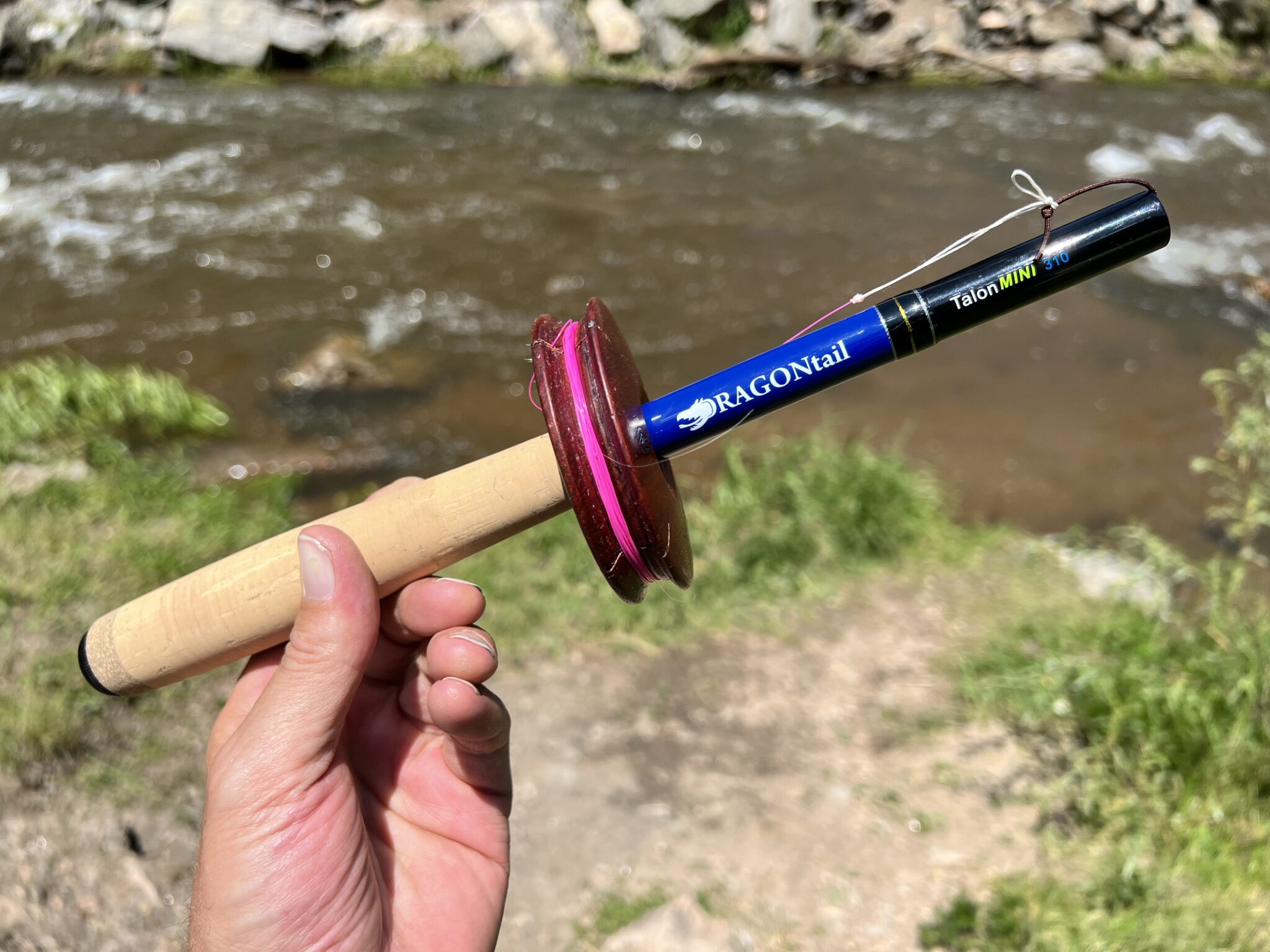
The TALONmini is a pocket rod that doesn’t feel like a pocket rod. The addition of fiberglass creates a soft tip that loads well even with shorter lines and unweighted flies that makes short, precise casts in close quarters effortless-exactly what a great small-stream rod should do. With excellent recovery and dampening, it’s just a pleasure to cast (not to mention to land fish on). You might think that a rod that collapses to down to only 12″ couldn’t possibly cast like a “real” tenkara rod, but the TALONmini made no sacrifices in action to achieve its sub-compact size. Now, you can be prepared to fish any time the opportunity presents itself without feeling like you’re compromising your experience on the water.
Manufacturer Specs
Rod Action: 6:4
Collapsed Length: 12.15 in. (30.8cm)
Extended length: 10.17 ft. (310cm)
Weight: 2.6 oz. (74.1g) (without tip cap)
Rod Tube Length: 13.3 in.
Rod Tube Weight: 3.5 oz.
CCS/RFI: 15.5 pennies/5.0 RFI
Tippet Rating: 4x
Cork Grip Length: 5.9 in. (15cm)
Number of Sections: 14
Note: The manufacturer’s specs give the rod weight without the tip cap. On my scale with the tip cap, the rod weighs 2.7 oz.
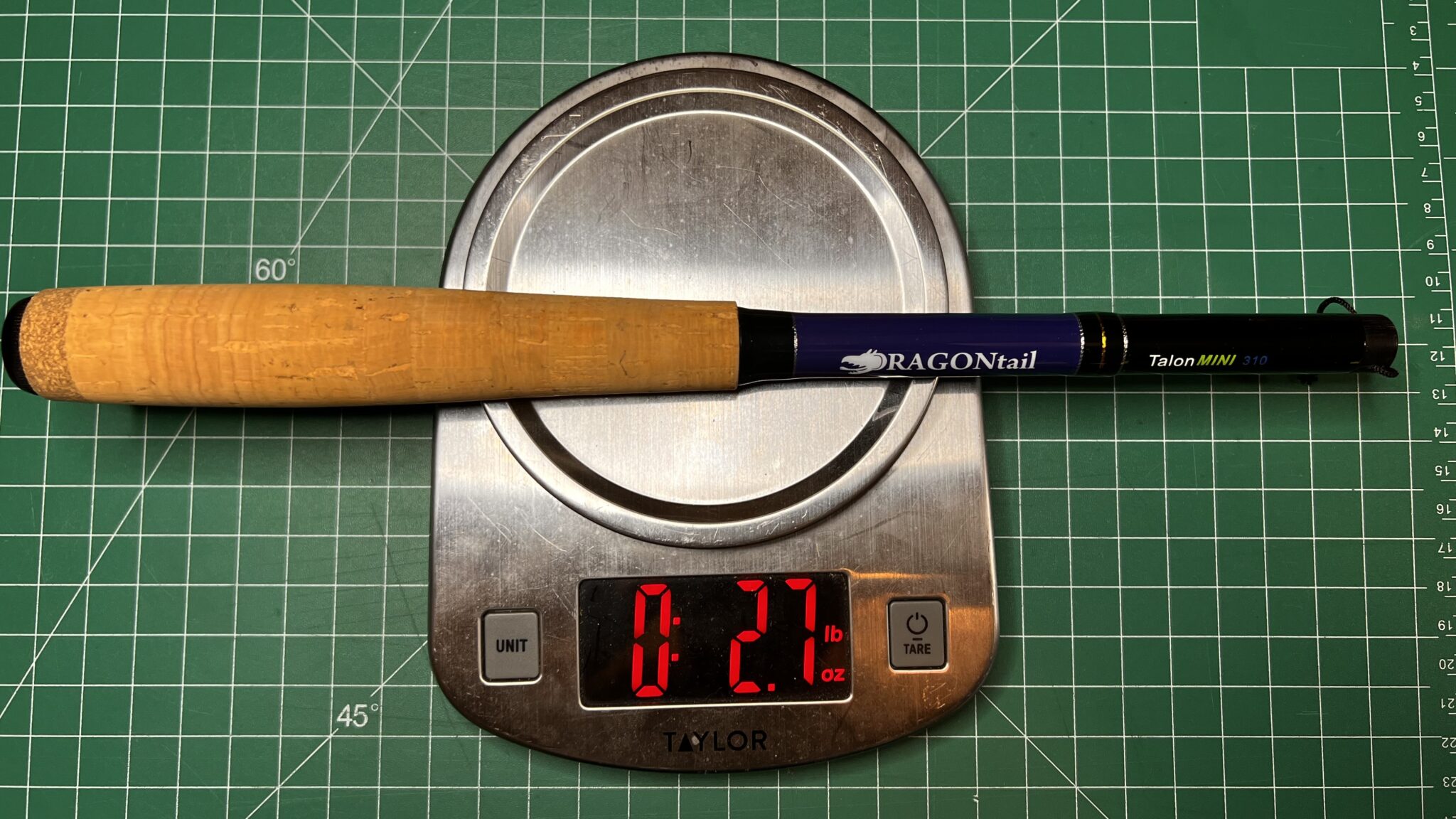
Unboxing
When I first pulled the rod tube out from its packaging, I was immediately struck by its diminutive size. I knew it was small, but I’ve seen longer hot-dog buns!
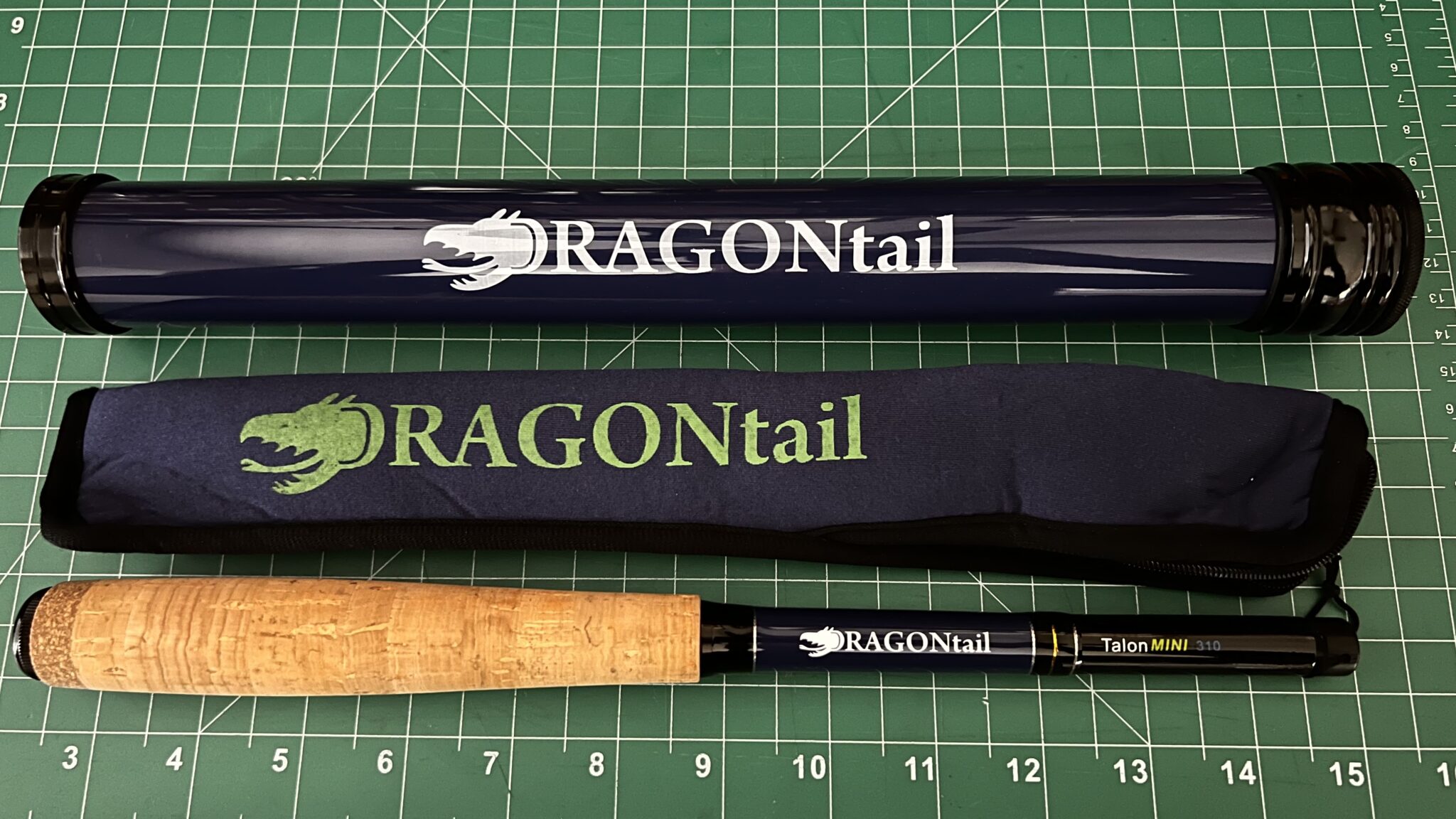
Then, I opened it up and the rod itself was even smaller!
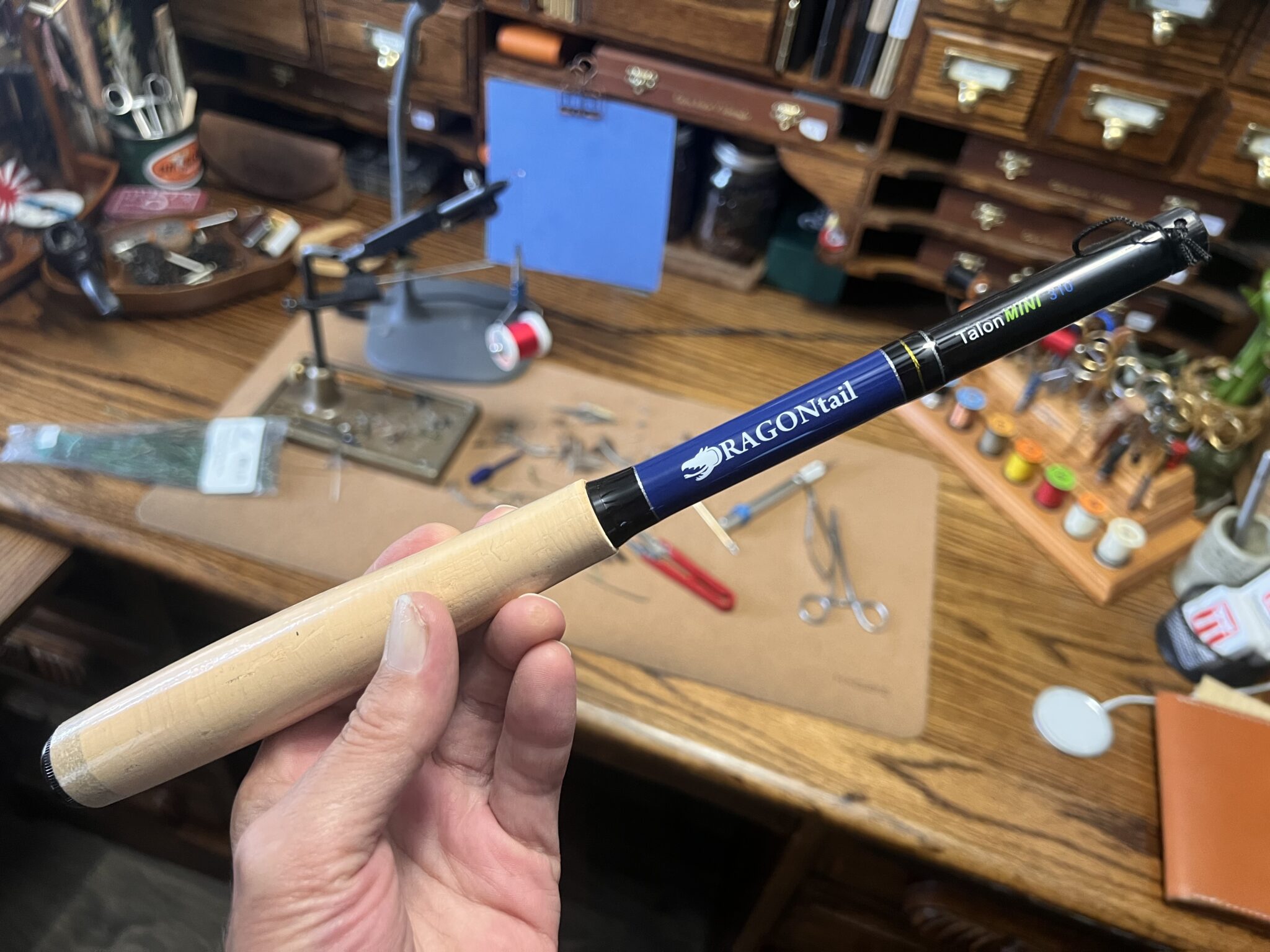
Of course I had seen pictures, but somehow, it’s even smaller in real life. There’s almost a feeling of disbelief that you’re holding something the size of a ruler that telescopes out to 10 feet!
From the first wiggle, I could immediately feel the fiberglass doing it’s magic and why this rod was something special.
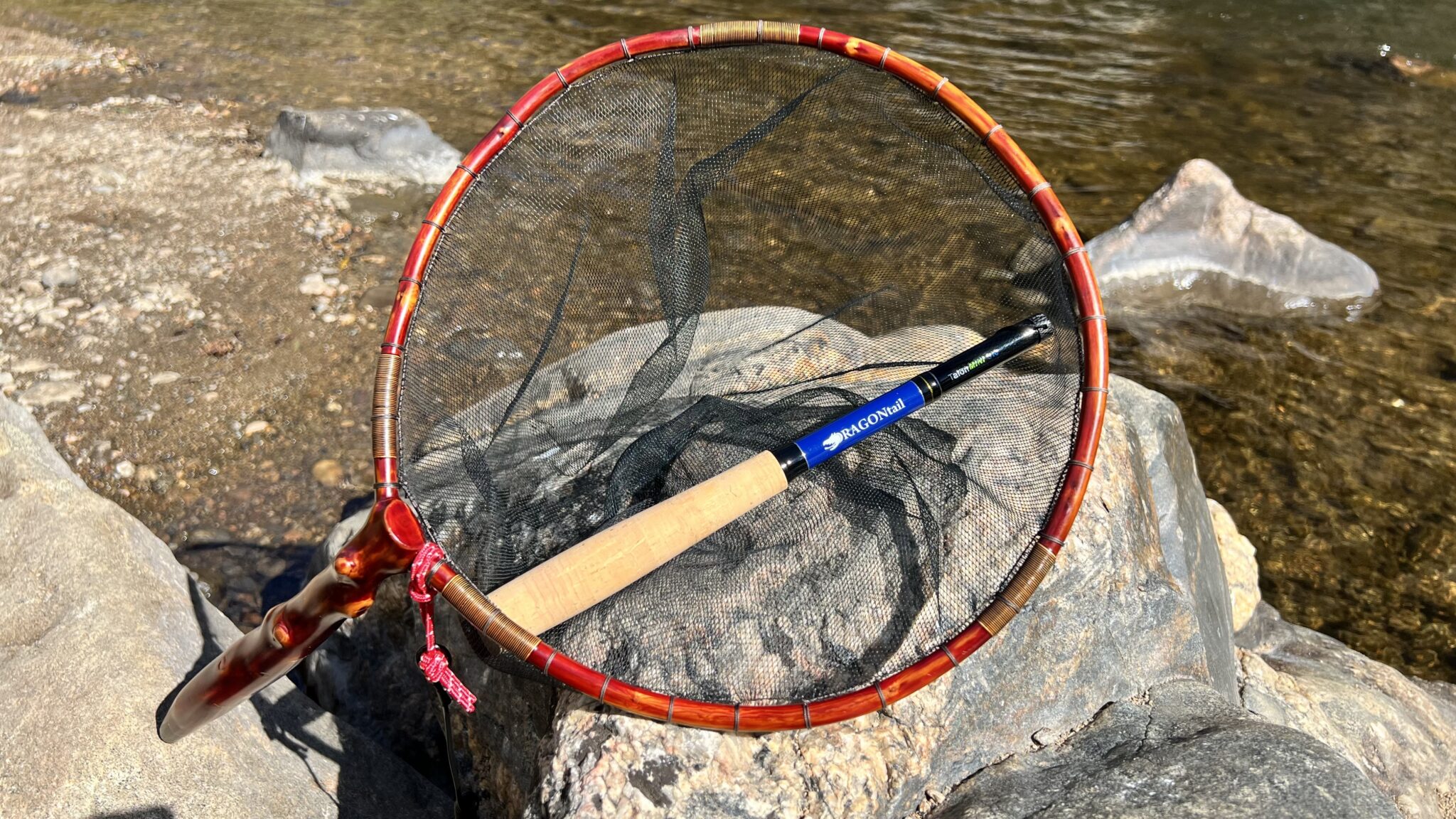
Hardware & Aesthetics
First of all, I’d like to reiterate my preference for cork grips. Many pocket rods have no handle, that is, the grip is really just a flared portion of the rod blank. But if I had my way, all tenkara rods would have cork grips, and one of the things I really appreciate about DRAGONtail is that they’re one of the few American tenkara companies that still uses cork!
It’s a really nice, tapered grip, though short. I thought perhaps too short. But when I fished it, it actually felt fine in both length and diameter in my hand.
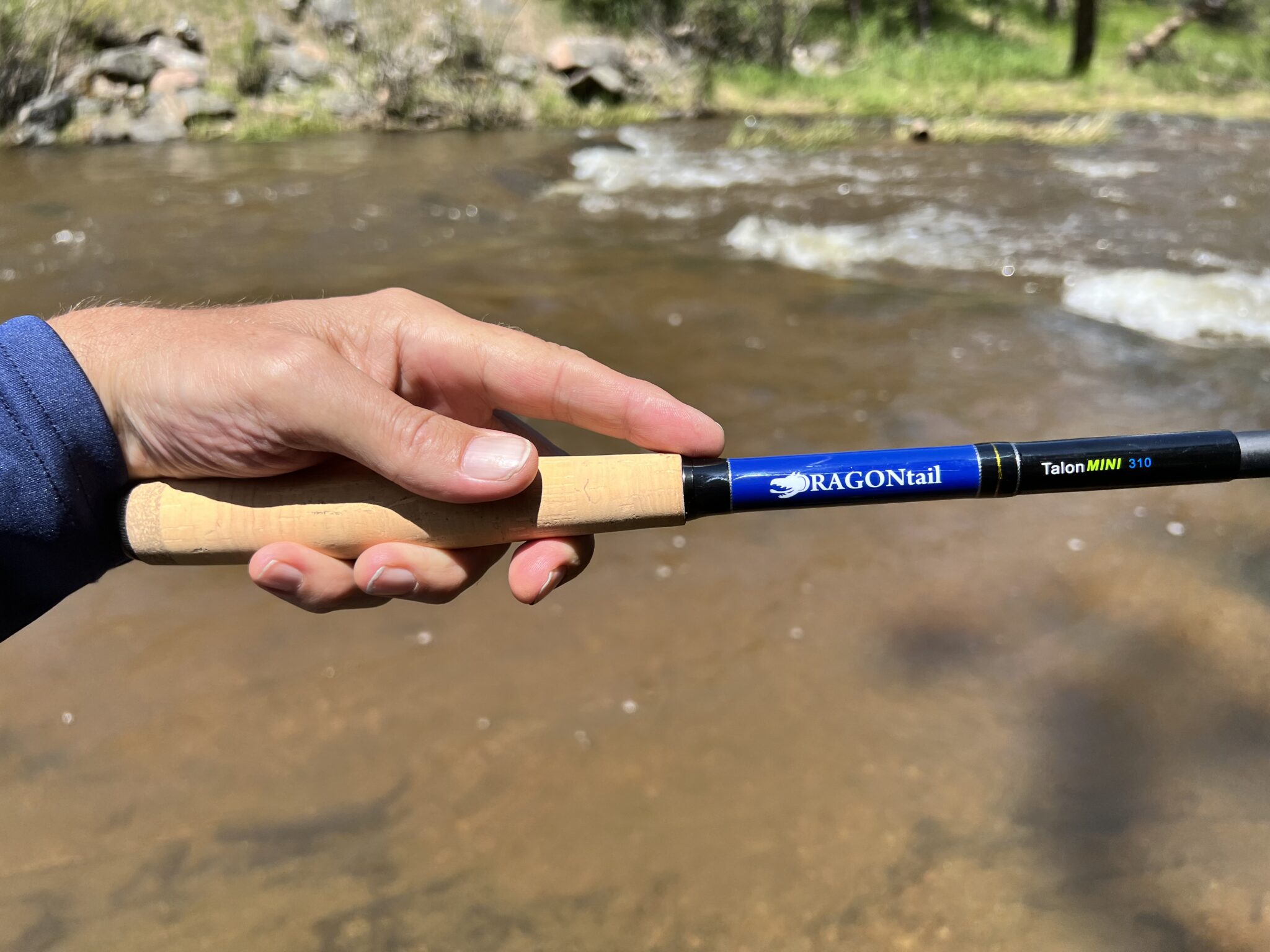
Of course, a short grip doesn’t leave you a lot of room to use different grips, but with a smaller rod like this, there isn’t much need to. It’s comfortable whether you grip the rod on the main part of the cork or just the very end of the handle (as I sometimes do).
Hardware is pretty much DRAGONtail standard issue, with a thick brown lilian, a swivel tip, and rod plug with spare lilian loop.
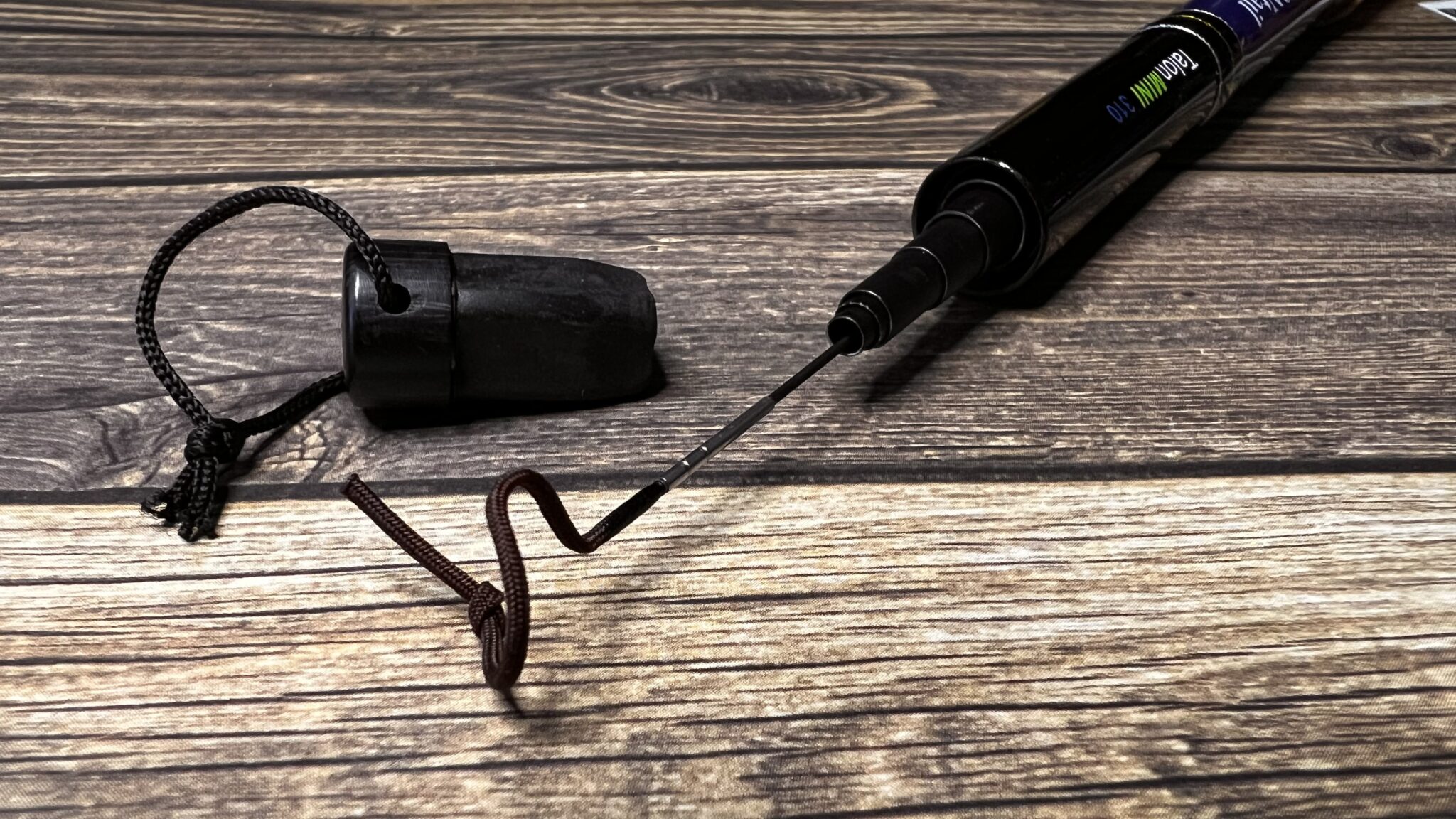
The but cap is aluminum with both knurling on the rim and a coin slot for easy removal. The butt of the grip has a ring of composite cork for durability.
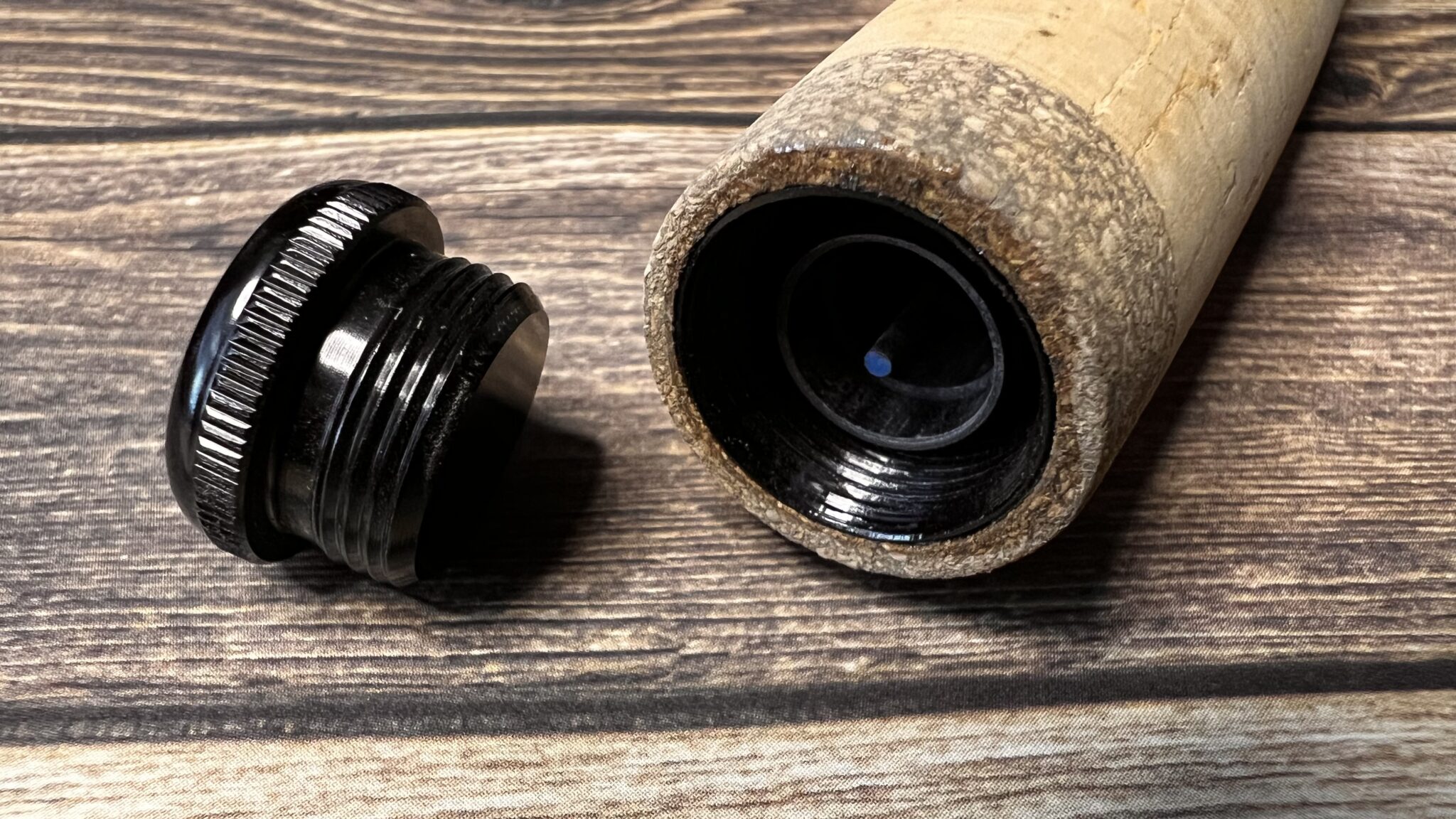
Overall, the TALONmini is an understatedly attractive rod with DRAGONtail’s signature color coding system in which the band above the handle matches the rod tube for easy identification. In this case; a navy blue band complimented with a nice matte black blank.
I think it’s worth mentioning the matte blank, since the last thing you want on a tiny stream with spooky fish is rod flash. In the picture below, note how there’s a little bit of flash only on the varnished part near the logo, but there’s zero flash on the rest of the blank. This is an important feature since small streams require stealth.
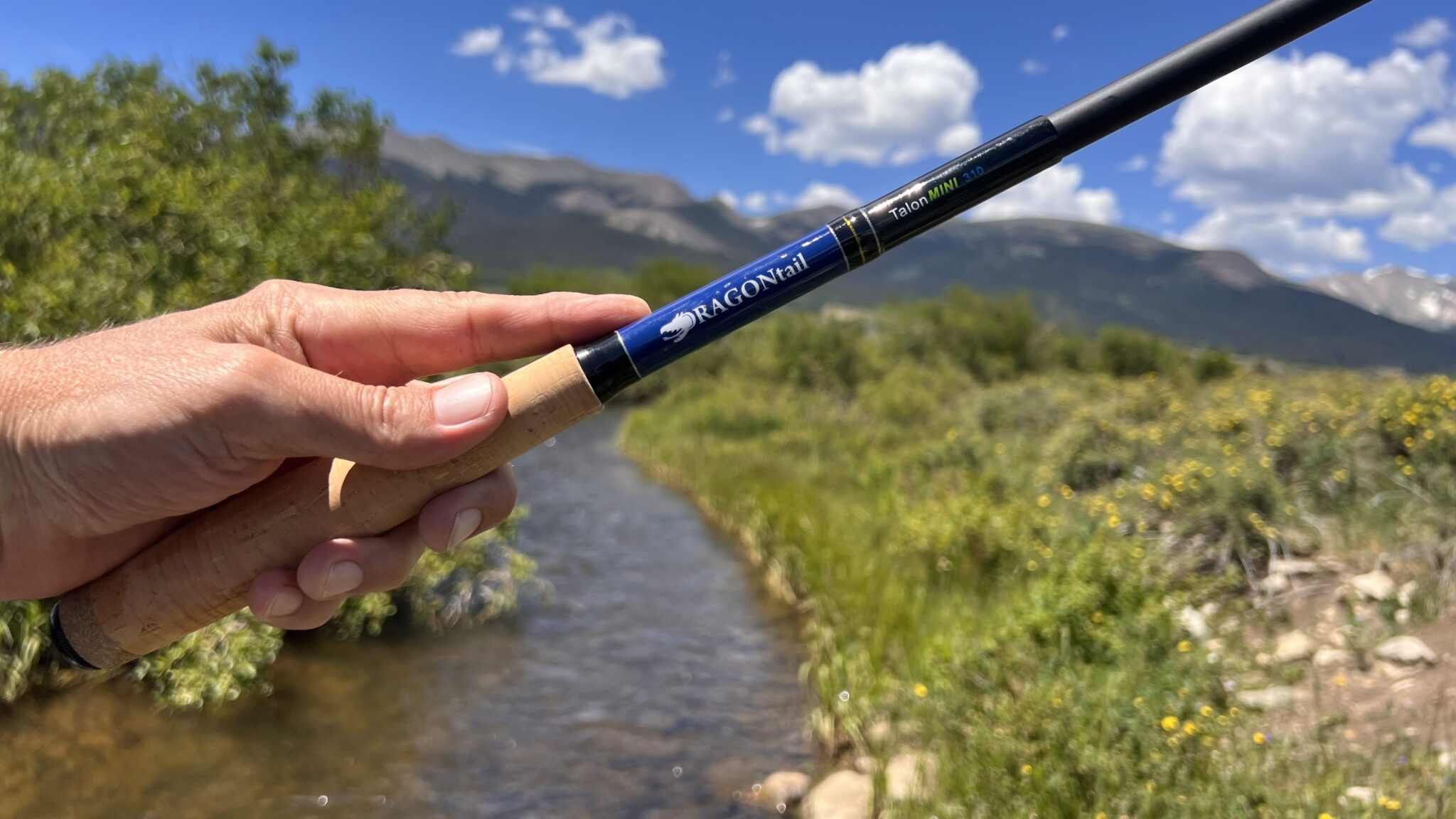
In the field …

Note: All testing was conducted with #3.5 level fluorocarbon in varying lengths (which see).
I first fished the TALONmini on a narrow, semi-brushy stream in Colorado’s Front Range. This is a meandering meadow stream that’s mostly open with intermittent areas of heavy overhanging vegetation. In some places, it’s only three feet wide and there’s an abundance of deep undercut banks and pools providing many prime lies. In other words, it’s the perfect place to test the mettle of any small-stream rod.

I had actually chosen a different rod to fish with that day, but quickly realized it was a mistake. So I went back to the car, grabbed the TALONmini, and fished it the rest of the day.
With a 10′ line and short, 2-foot tippet, it immediately proved to be the perfect rod for that water, and the day ended up being the ideal scenario for field testing–lots of cooperative fish in a good diversity of tricky lies with many casting challenges. And the TALONmini performed with flying colors.
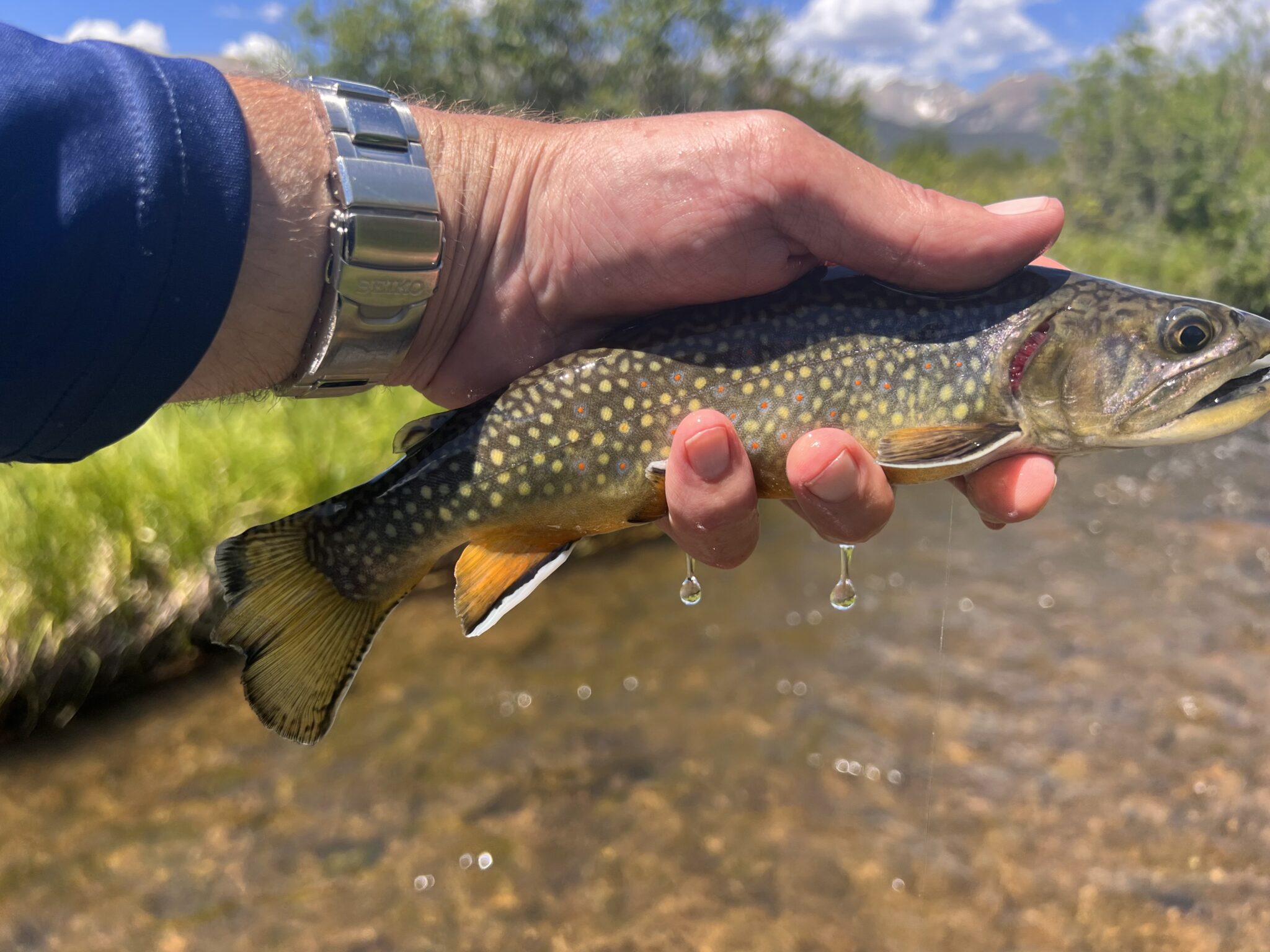
In my review of the DRAGONtail Ragrarok, I clarified that its softer tip is not due to the addition of fiberglass (as some speculated).
However, in this case, the TALONmini actually does incorporate fiberglass, and that’s the genius that solved the aforementioned “pocket rod problem”.
Thanks to that soft tip, the rod loads very easily in close and with shorter line–exactly what I needed on that stream. I was able to get the fly exactly where I needed it to go and often, this meant making a J-cast with an Oni loop to get under an overhanging branch so I could get a good drift in an undercut bank. Some of the pools on this stream are deep, short, and heavily guarded by branches, so there isn’t much room for error. But the TALONmini consistently hit the target with little effort or thought. And I know I really like a rod when I don’t have to “think” about it at all–just fish.
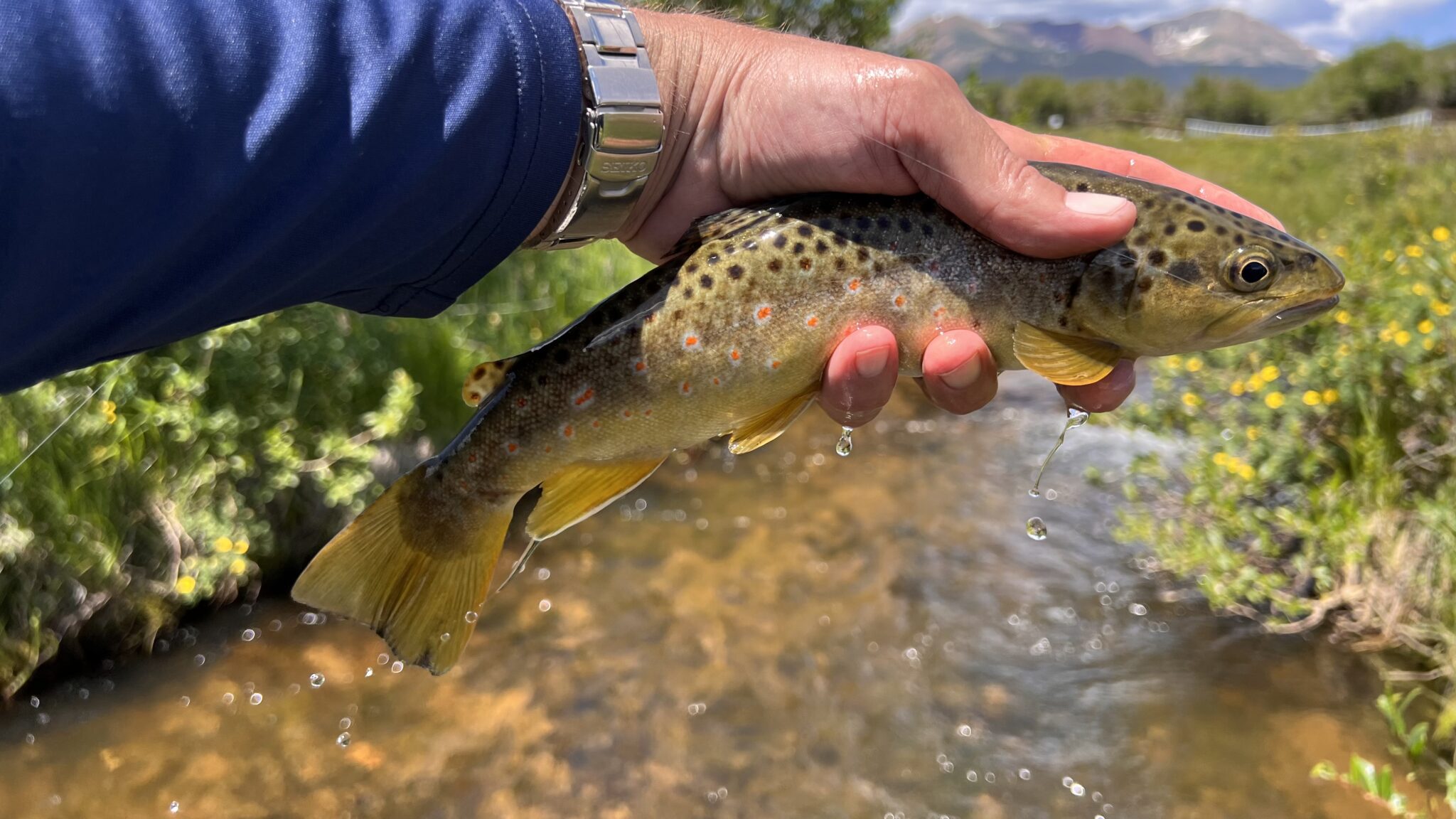
This stream has mostly small brown and brook trout and all of mine were in the 6″-12″ range–which is unfortunate because I really wanted to test it on some bigger fish.
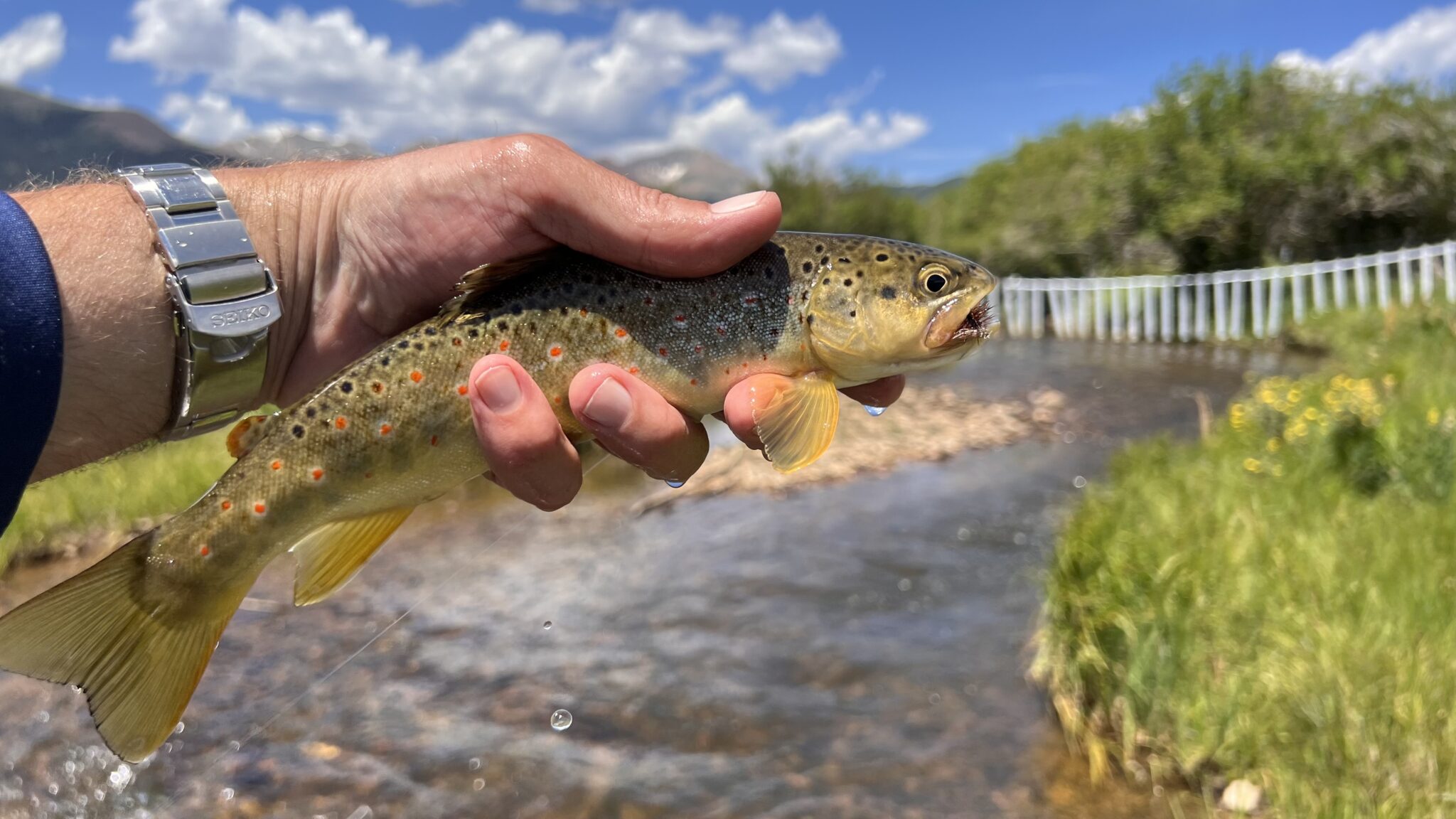
While the tip may be soft, the TALONmini sports a strong butt section. While fighting a couple of larger fish, I had lots of leverage to steer them away from some really nasty snags and I could feel the reserve power kick in when I wrenched on the rod.
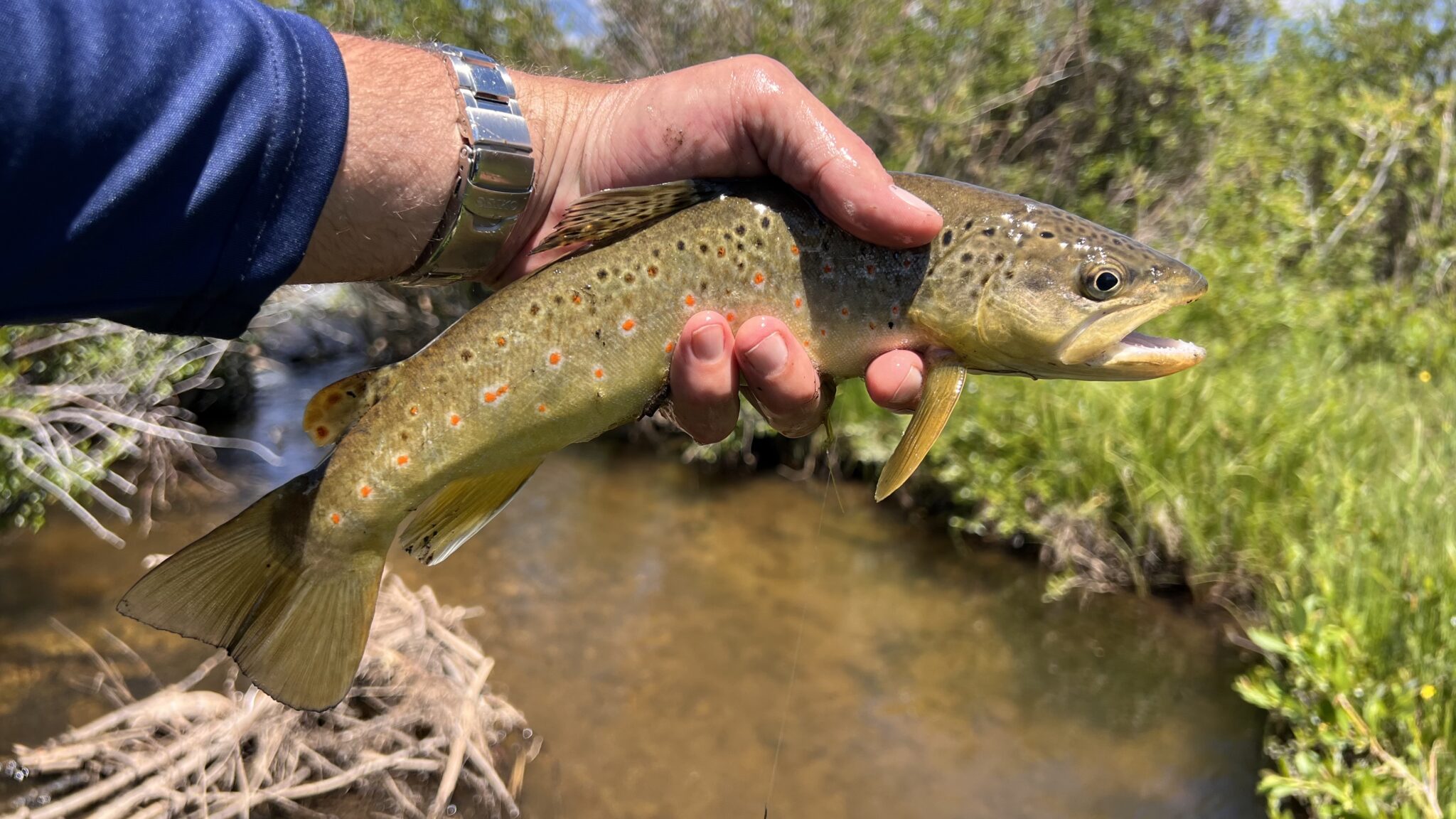
I spooked two browns that were at least 18″ and I tried my best to rest the pool and return in hopes of hooking one just to test the Mini’s fighting abilities, but was unsuccessful. Those two fish are on my hit list now, and I vowed to return one day, armed with the TALONmini again, and challenge them to a duel.
I have confidence that this rod is capable of taming them. Fiberglass is known for its excellent tippet protection, so when you combine a soft, cushioning tip with a sturdy butt section, you get a rod that’s really good at landing strong fish.
In terms of feel, for anyone who’s already familiar with the action of fiberglass rods, all I need to say is: you get it. For those not, imagine feeling the rod doing the work for you–really feeling it load on the backcast, then and unload forward like a spring, with surprisingly little effort. It’s something like that.
In addition to the small-stream rod requirements covered so far, you can add: precision.
You can really feel the tip work through the cast and it dampens well so you don’t get energy wasting “ripples” in the line. In other words, when the rod unloads (straightens out), it doesn’t wobble much, so the line furls out more efficiently. Which is all a complicated way of saying: “the rod is accurate.”
I purposely sought out difficult lies just to check accuracy. In a stream like this where the prime lies are undercut banks, you need to get your fly right up against the far bank as you can. I was happy with the TALONmini’s accuracy and I was even able to make (some) tricky shots. The ones I missed were my fault, not the rod’s. 😉
There are two things I cannot report on:
- Its performance in wind. Either fortunately or unfortunately, it just wasn’t windy the days I happened to be out with the rod.
- How it casts with furled lines–because I don’t use them. I imagine though that a nice furled line on this rod would be spectacular–like a fiberglass fly rod with a smooth, traditional silk like. I should make it a point to try this next time I’m out and report back.
Applications
While small streams like above are where the TALONmini really shines (and probably the kind it was mostly intended for), I also fished it on a few of my usual local rivers to see how well it handled more medium-sized water with a longer line.
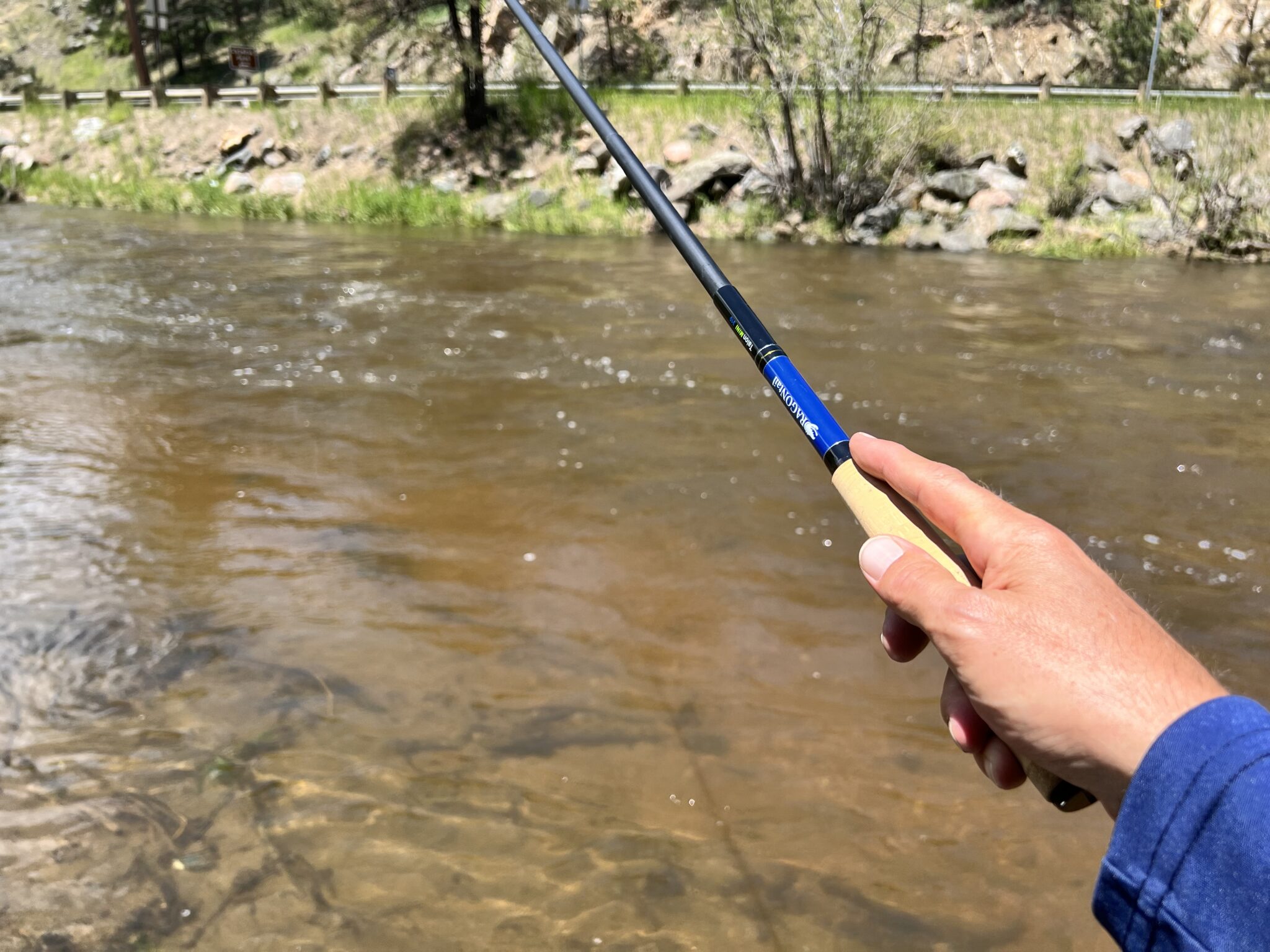
It handled just as beautifully in less technical situations and really, I was only limited by its length. These are rivers where the TALONmini wouldn’t be my first choice (I’d want a 13′ rod), but I wanted to push it and see how much of an “all around” rod it could be in my area. My conclusion is that it obviously shines on small water where you need to fish close in, but it’s at least capable of fishing medium-sized rivers. Obviously on larger pools, the far bank might be out of reach but you will still be able to fish effectively at close range in an emergency.
But, of course, the clear standout of the TALONmini is its demure size. Throw it in your glovebox, bike bag, backpack, purse, briefcase … it will fit just about anywhere! keep mine in my gear bag as a backup in cast of breakage, but also as my short-rod alternative if I need to step down in length or will be fishing in tight spots.
With the TALONmini, you now have absolutely no excuse not to be prepared to fish anywhere, anytime. I think it’s a brilliant design that will become a standard by which other pocket rods will be measured (maybe literally): “Does it collapse down as small as the TALONmini?”
For pricing, current availability, and more info., visit the DRAGONtail Tenkara TALONmini page.
For another perspective, a more technical comparison, and a video of the TALONmini in action, visit Tom Davis’ review on Tenkara Angler.









Excellent review as always, Jason. The review isn’t late, it’s good timing!
– Tom
Great review. I fish in the NC Mountains, lots of small brushy creeks and blue water to backpack back into reach them. This review really helped me find a rod that would be prefect for that. Plus, I’m an Ultralite Backpacker too.
Hi Bobby,
Yes, it’s pretty much the ultimate backpacking rod. I don’t think you could make it any more compact than this without greatly sacrificing performance. Let me know how you like it!